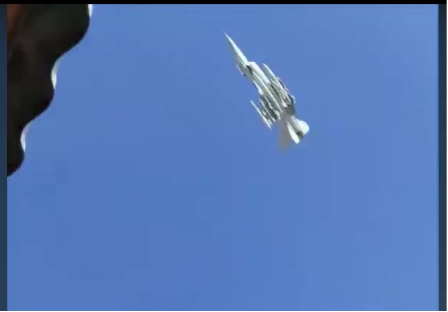Both Russian mainstream and social media has been claiming for more than a week to have seen four F-16 fighter aircraft flying over the city of Odesa and surrounding areas of Ukraine. Some of those sources insisted the aircraft had taken off from airfields in Romania.
Romania’s Ministry of National Defense of Romania was quick to deny the allegations, issuing a statement on Tuesday, July 16 that said: “So-called unidentified ‘sources’ on the Russian Telegram platform, have claimed that F-16 aircraft took off from Romanian airfields to carry out missions in Ukrainian airspace, over the Odesa region.”
JOIN US ON TELEGRAM
Follow our coverage of the war on the @Kyivpost_official.
The statement continued “[We want to make] it is as clear as possible that the imaginary sources of Russian propaganda have transmitted false information. The F-16 aircraft of the Romanian Air Force perform training and policing missions exclusively in its national airspace, with strict compliance with the rules established by international legislation.”
Romania hosts the European F-16 training center (EFTC) at the Fetesti military airbase, which is situated about 130 kilometers (80 miles) from the Ukrainian border and 320 kilometers (200 miles) southwest of Odesa. Fetesti was established to provide F-16 pilot and maintenance crew training for NATO countries and Ukraine using aircraft provided by the Netherlands with training support from Lockheed Martin and its contractors.

Trump Snubs Polish President Duda, à la Putin
Romania itself has a fleet of around 50 F-16s, acquired from Norway and Portugal between 2016 and 2023, which it is planning to eventually replace with the latest-generation F-35 fighters by 2030.
It was reported early last week on the sidelines of the NATO Heads of State summit by Dick Schoof, the Netherlands’ prime minister, and Mette Frederiksen, his Danish counterpart that the first F-16s were on the way to Ukraine. This sparked much speculation on how many aircraft, from an expected total of around 80, would be in this first tranche, where they would be based, and what their operational tasks would be.
There have been suggestions that they could be based either in Poland or Romania although most commentators have dismissed that suggestion as being a risk to embroiling those nations and NATO as a whole in direct military action by and against Russia.
There is as much speculation over what Ukraine will use the aircraft for. While providing an undoubted uptick in Kyiv’s air defense, experts suggest that there are not enough of them to challenge Russia’s air superiority other than on specific encounters. Yet their presence may well make Moscow’s own aerospace forces more cautious on operations which would indirectly benefit Ukraine’s frontline areas.
One suggestion, which actually makes the Odesa story seem a little more likely is that their initial use will be against Russian air defense assets protecting Crimea as part of Kyiv’s strategy to apply as much pressure on the territory which is seen as very much Putin’s “jewel in the crown.”
Other analysts suggest the other advantage in that strategy is that if an aircraft comes down near Crimea, which is almost an island, it is more likely to be ditched into the sea, making any rescue operation potentially more straightforward and less likely for the F-16 to fall into Russian hands.
The military issues magazine BulgarianMilitary.com quotes international affairs analyst Gallagher Fenwick, as saying, if Russia was to seize an “F-16 [it] will have two major impacts. Firstly, their display in Red Square could be quite embarrassing. More concerning is that it allows for detailed study [by Russia].”
You can also highlight the text and press Ctrl + Enter











